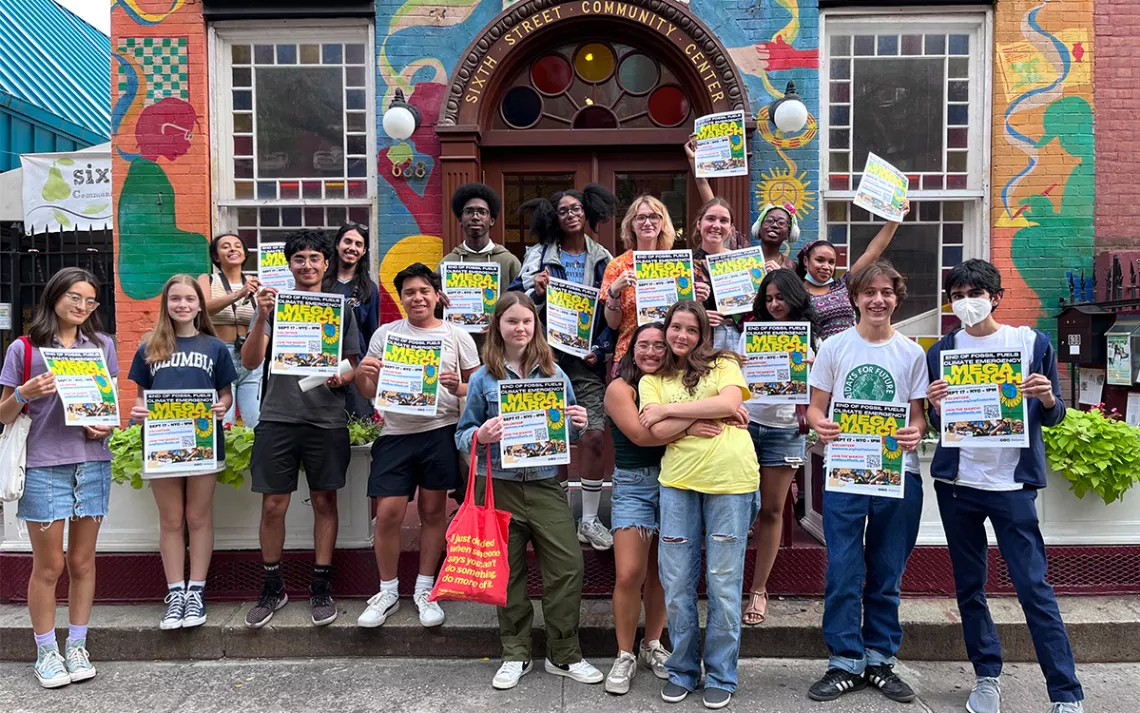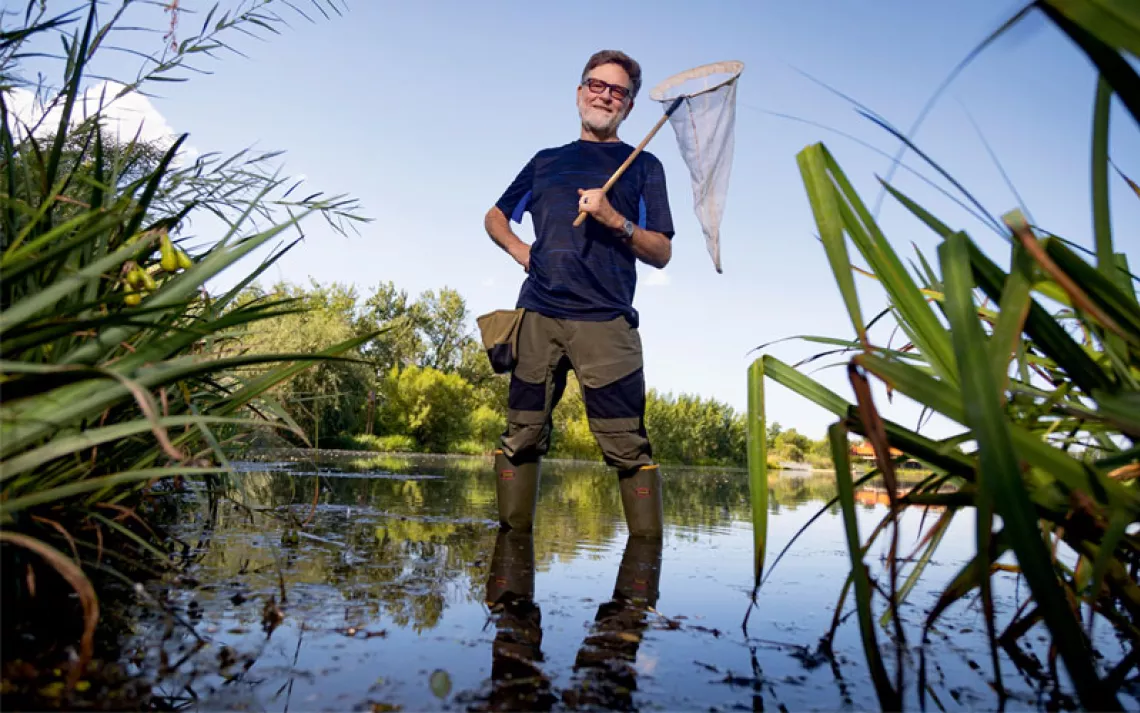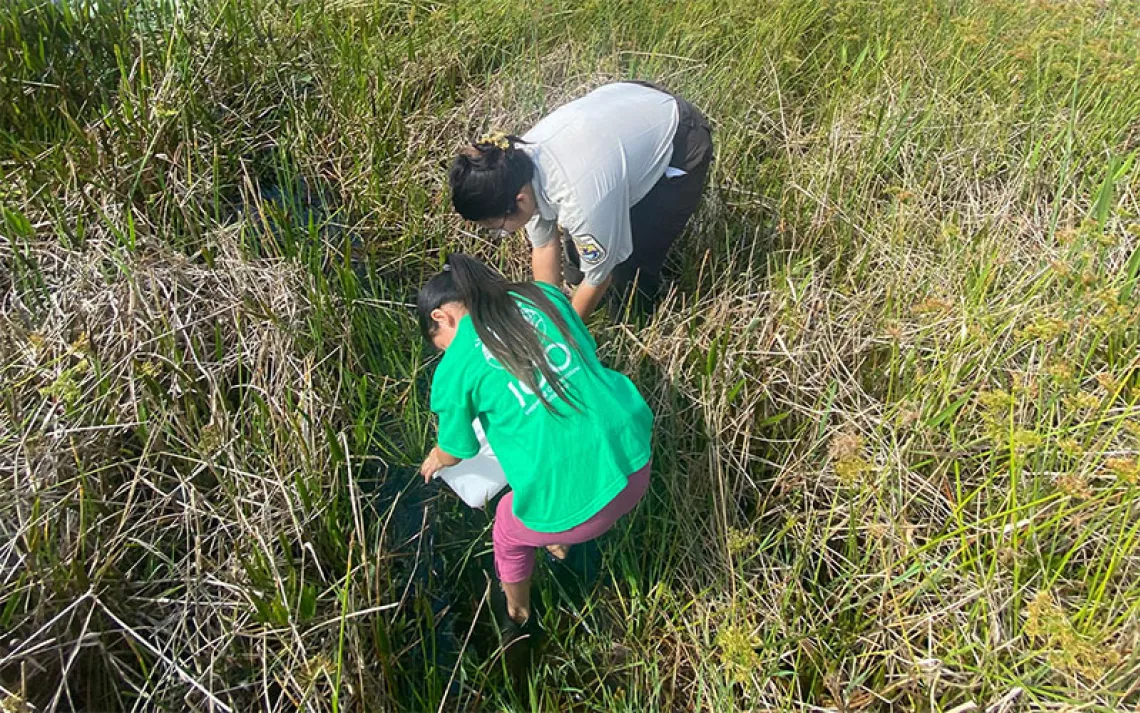Meet the Teenagers Helping to Plan the Biggest Climate March Since 2019
Fridays for Future NYC is in charge of the youth turnout for the March to End Fossil Fuels on September 17

Climate activists pose outside the Sixth Street Community Center in New York. | Photo courtesy Fridays for Future NYC
It’s a sticky late-August afternoon in New York City’s Alphabet City neighborhood, and the refrain of a protest song echoes through the Sixth Street Community Center, a former synagogue turned neighborhood organizing space. The teenagers in the back room are still a bit timid, but they’re growing more comfortable as the words and melody are reinforced with call and response.
“Should we try it all together now?” Keanu Arpels-Josiah, 18, asks the group.
After a few tentative nods, they begin to sing in unison for the first time without being led by the call and response. Like riding a bike without training wheels for the first time, they’re a bit shaky at first, but confident and proud by the time they reach the chorus.
“It’s the end of fossil fuels,” the group sings together.
The group, Fridays for Future NYC, is learning the song in preparation for the March to End Fossil Fuels on Sunday, September 17. The youth group is one of the hundreds of organizations that have endorsed the march, and many of its members are busy participating in the planning process to make the event the biggest climate action since the Global Climate Strike in 2019. Fridays for Future NYC has been tasked with an important responsibility for the coming march: Recruit as many high school students and young people as they can to show up on the 17th.
“I feel like this could really do something and be a way that we sort of punch back against the way that environmental policy has been on the back burner in the US,” says Helen Mancini, a 16-year-old junior at Stuyvesant High School.
“We know the scale of the climate crisis, and we know the scale of the amount of people that need to be involved to make a real difference. I think the challenge always is how you can get more people aware of the work that’s happening and aware of how they can be involved in it.”
For these youth organizers, it’s already been an action-packed summer spent passing out flyers around New York City, brainstorming ways to increase youth turnout, and joining Zoom calls with the national march coalition. Their whole summer has led to these last few weeks, which are focused on organizing hub captains at local schools, who in turn will be responsible for bringing students from their schools to the march. At weekly meetings, the brainstorming to increase turnout continues, along with learning chants and songs and creating content for social media to encourage their peers to join them.
“We know the scale of the climate crisis, and we know the scale of the amount of people that need to be involved to make a real difference,” says Arpels-Josiah, a senior at LREI in Lower Manhattan. “I think the challenge always is how you can get more people aware of the work that’s happening and aware of how they can be involved in it.”
About 250,000 people flooded the streets of Manhattan in September 2019 for the Global Youth Climate Strike, which featured an appearance by Greta Thunberg. Then the pandemic hit just six months later, and there hasn’t been a climate mobilization matching those numbers in the United States since. Fridays for Future NYC and other march organizers are hoping the March to End Fossil Fuels will make just as big a splash as the 2019 event, and that it will help spur urgency among world leaders at the following week’s UN General Assembly meeting, during which sustainable development goals and climate action will be discussed.
The 2019 strike was the spark that got Emma Buretta, a 17-year-old senior at St. Ann’s School in Brooklyn, involved in Fridays for Future NYC in the first place. She was already following Thunberg’s example of striking at her school on Fridays and she had started attending climate advocacy meetings with her babysitter in tow. As one of the youngest in the room, she watched older members conduct meetings and learned by example, eventually becoming one of the driving forces behind the group’s revival after the pandemic shutdowns.
“We have a place in the New York City climate movement; we have to keep going,” Buretta says. “Over time, we’ve just been building up the organization more and more, and that’s how we got to the March to End Fossil Fuels.”
The march is structured around a number of hubs, which are interest- and identity-based groups that are planning to show up on the 17th. Each hub is led by a captain who commits to bringing at least 10 people to the march. Fridays for Future NYC is spearheading the overarching youth hub and bringing together students from across the city to become hub captains for their individual schools. Mancini, Buretta, and Arpels-Josiah are all helping to facilitate the hubs at their own schools.
“I’m always kind of afraid I’m doing it wrong, especially when we talk about designing the youth hub and making sure everybody’s included and nobody gets mad at the organizers for it feeling exclusive,” Mancini says. “It’s a lot to carry on your shoulders. I’m a junior in high school. I have lived a life that isn’t this shared experience with every young person. So it’s hard to speak on behalf of all of them, but somebody needs to, I guess.”
Organizing a massive grassroots mobilization is a lot to ask of high school students who are also thinking about going back to school, studying for the SAT, and preparing their college applications. As they start the school year, the planning meetings will become a bit harder to attend since they’ll be in class. But Arpels-Josiah said that there is an understanding among the larger coalition of the extra demands of being a high school student and climate activist, and that he feels youth voices are being centered in the planning process.
“I think it’s pretty powerful how, especially more recently, youths have been able to be part of these conversations around the climate movement and around these bigger organizing efforts,” he says. “It makes sense that we are and should continue to be in these spaces, because it really is our future at the end of the day.”
Even though Fridays for Future NYC is part of a large national coalition, the group’s members are still trying to keep the same community-based, grassroots organizing strategies they’ve always used and are known for. Their past strikes and climate actions have all been organized from the ground up, with their own fundraising and planning efforts. The March to End Fossil Fuels coalition, in contrast, is quite a bit larger, with many more moving parts that other groups oversee.
“It feels like such a big thing that it’s really hard to get our community involved sometimes,” Buretta says. “I just want to make sure that all the youths feel included and feel like they have a say in what’s happening.”
The youth organizers are hoping their efforts will pay off and that they’ll be able to show up on the 17th with thousands of young people demanding change. The march’s demand of stopping new fossil fuel development is targeted at President Biden, whose administration has continued to approve new fossil fuel ventures like the Willow Project in Alaska. Arpels-Josiah says the march will hold Biden accountable for the promises he made on the campaign trail in 2020 to end fossil fuel development on public lands and be a president for the climate.
“He looked a young voter in the eye and said, ‘I promise you, I will end fossil fuels,’” Arpels-Josiah recounted. “He looked our generation in the eye and told us that, and now he hasn’t been doing that. He’s been approving more fossil fuel projects again and again, which is just incompatible with our future and being the climate president he claims to be.”
The explicit focus on fossil fuels has been driven home at weekly Fridays for Future NYC meetings, with protest songs that describe a future impacted by climate change with fires and floods and an overview for new members on how Biden has not kept his campaign promises. These last few weeks before the march will be focused on preparing for the day of action while continuing recruitment efforts. There will also be community art builds for making signs and banners, along with the final meetings with the national coalition.
Despite the stress and exhaustion from planning a massive climate march during the summer break, the activists of Fridays for Future NYC are already looking forward to building on the march momentum after it’s over. Buretta says the group usually sees a spike in interest after actions like these, so they are preparing to recruit new members as they head into the school year and into an election year in 2024. And, hopefully, they’ll gain some new friends as well.
“The thing about Fridays for Future is that we didn’t choose to be friends from being in a class together. We all chose caring about the environment and caring about this movement,” Mancini says. “And I think that choosing this movement instead of something else … it really makes it a powerful friendship.”
 The Magazine of The Sierra Club
The Magazine of The Sierra Club



